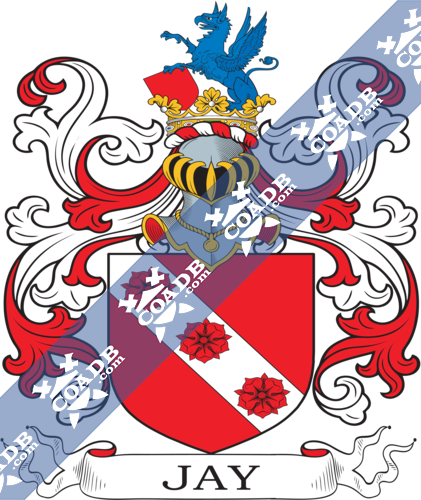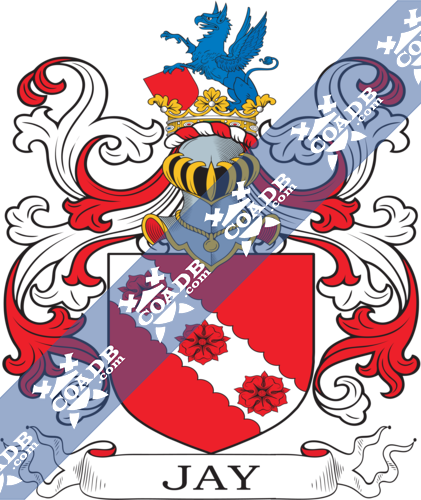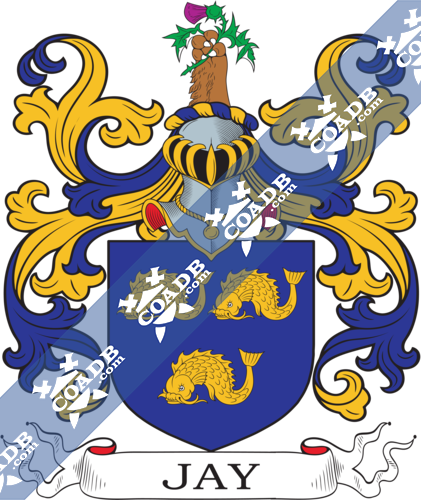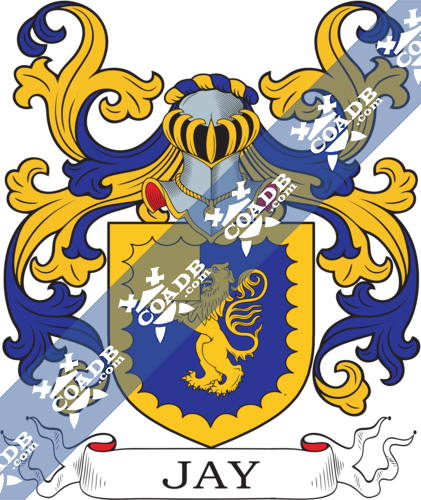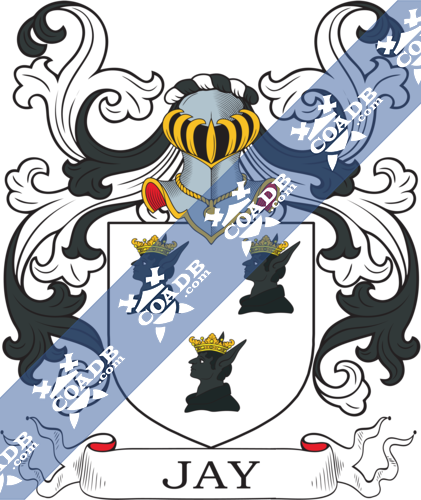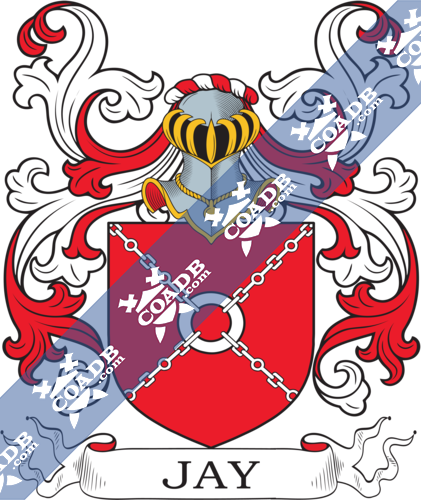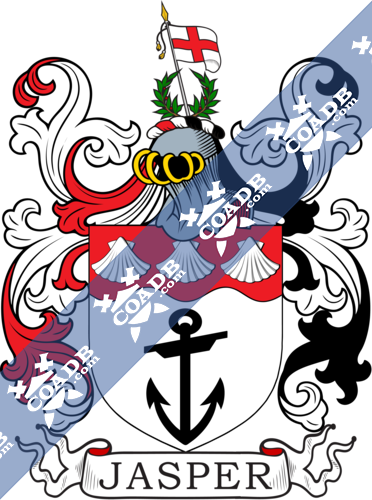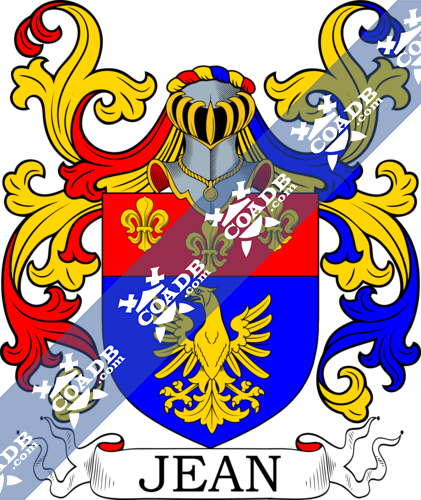Jay Family Crest, Coat of Arms and Name History
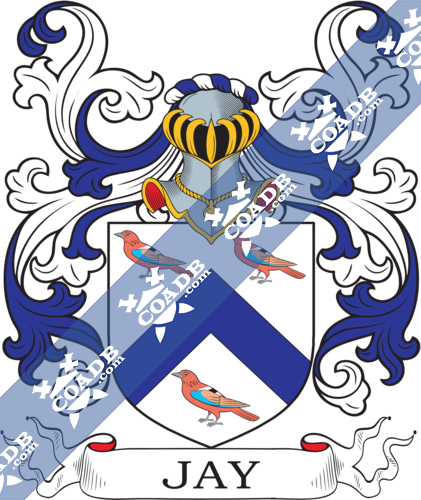
Jay Coat of Arms Gallery
Don’t know which Coat of Arms is yours?
We can do a genealogical research. Find out the exact history of your family!
Learn MoreJAY
This surname is of English and French origin. The English variant was derived from the medieval English “jaye” as in the bird. The French variant was derived from the old French “gai” from the Latin “gaius” which translates to joyful. In either case, the name(s) would have been used as a nickname for someone who displayed the characteristics of a jay bird or one who was happy and a lively person.
The variations in the spelling of the surname includes; Jay; Jaye; Jays; and Jayes among others. The variations in spelling of surnames dating back to ancient times can be attributed to a lack of consistency regarding guidelines for spelling in use by the scribes who recorded such information, many of which were in the habit of spelling phonetically. The issue of multiple spellings of names in records was compounded by the diversity of languages in use in European countries at this time.
Until the mid to late sixteenth century, surnames were rarely if ever used. In the small settlements and villages which existed during earlier times in most of Europe, residents found little need for surnames as everyone in these communities knew each other and a given name would usually suffice. However, as communities grew and people began to migrate on a larger scale, along with the need of the government having a reliable way to track people for tax and census purposes, the aristocracy’s penchant for using surnames seemed the appropriate evolution to this problem. In most instances to distinguish themselves, one from another, those not of the noble class would often be identified by their given name plus their occupation while others may have been identified by their given name and one of their parent’s names.
There was a limitless supply from which surnames could be formed, in addition to the use of patriarchal or matriarchal names, or reference to the individuals occupation, there were things such as defining physical traits, a familiar geographical location or a topographical landmark found near the individual’s home or birthplace, the name of the village in which the person lived, and so much more. Over the course or time, surnames would come not just to represent an individual but whole families.
One of the earliest record of any variation of this surname is that of Gilbert Jai which appears in the Lincolnshire tax rolls from 1199. The tax rolls, were a series of census and tax records kept by the English Treasury by order of King John, with the oldest dating back over seven hundred years to the 12th century. These documents are considered the oldest concentric set of records detailing English governance in the United Kingdom spanning a period of over seven centuries.
With the discovery of America and the addition to the British Commonwealth of countries such as Canada, Australia, and New Zealand, it was not long before people began to immigrate to these outlying areas. The use of surnames made tracking of immigrants easier. One of the first recorded immigrants to America bearing the surname was Thomas Jay who landed and settled in Virginia in 1635. Robert Jay landed and settling in Maryland in 1674. Robert Jay was one of the early settlers to Canada, landing and settling in Saint John, New Brunswick in 1833. Edward Jay and his sons, Richard and Samuel, are some of the early settlers to Australia, arriving and settling in South Australia in 1855.
Worldwide, the highest concentration of people with the surname Jay are found in Canada, the United Kingdom, Australia, France, and India. By state, the largest percentile of those with the surname Jay live in Massachusetts, New York, Pennsylvania, and Rhode Island.
There are many notable people with the surname such as American statesman and one of the Founding Fathers of the United States of America, John Jay. He was also a President of the Continental Congress, signer of the United States Constitution, one of the authors of The Federalist Papers, a negotiator of the Treaty of Paris wherein Great Britain recognized the United States independence, Governor of New York, and the first Chief Justice of the United States among other achievements.
John Jay’s childhood home located in Rye, New York is a New York state historic site. The house in Katonah, New York where he lived after retiring is also a New York state historic site.
Blazons & Genealogy Notes
1) (co. Devon). Ar. a chev. az. betw. three jays ppr.
2) (Selston, co. Nottingham). Gu. on a bend ar. three roses of the field. Crest—On a ducal coronet or, a griffin sejant az. resting the dexter foot on an escutcheon gu.
3) (Sheriff of Norfolk, 1678). Same Arms, bend engr.
4) (Scotland). Az. three dolphins naiant or. Crest—A lion’s paw holding a thistle ppr.
5) Az. a lion saliant and a canton or, a bordure engr. of the second.
6) Ar. three Midas’ heads erased sa. crowned or.
7) (Holme). Gu. four chains fixed to an annulet in fess saltireways ar.

